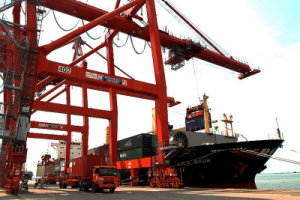The developing East Asia Pacific economies are expected to grow by 7.1 percent this year, 0.1 percentage point lower than the previous forecast in last October, the World Bank released the data on Monday.
According to the half-year East Asia Pacific Economic Update, the slowdown is mainly due to China’s moderated expansion, as well as Thailand’s political uncertainty.
China’s growth is expected to ease slightly from 7.7 percent in 2013 to 7.6 percent this year. If China is excluded, the developing countries of this region will grow by 5.0 percent, down from 5.2 percent last year.
Tougher global financial conditions and higher levels of household debt will be the main challenges larger Southeast Asian economies may face this year. Malaysia’s growth will accelerate modestly to 4.9 percent, while the Philippines and Indonesia will both see slower growth rates of 6.6 percent and 5.3 percent respectively.
Thailand is expected to suffer a much slower growth rate of 3.0 percent this year, which is 1.5 percentage points lower than the previous forecast of 4.5 percent in last October. “In Thailand, implementation delays and political uncertainties have been the major contributors” to its slowdown, the World Bank said.
However, the World Bank still see stable economic growth this year, helped by a recovery in high-income economies and the ” market’s modest response so far to the Federal Reserve’s tapering of its quantitative easing”.
“East Asia Pacific has served as the world’s main growth engine since the global financial crisis,” said Axel van Trotsenburg, World Bank East Asia and Pacific Regional Vice President. ” Stronger global growth this year will help the region expand at a relatively steady pace while adjusting to tighter global financial conditions.”
On the other side, the World Bank said risks to the regional forecast still remain.
Bert Hofman, chief economist of the World Bank’s East Asia and Pacific Region, had cited the possible risks, including a slower- than-expected recovery in advanced economies, a rise in global interest rates and increased volatility in commodity prices because of recent geopolitical tensions in eastern Europe.
“Structural reforms are key to reducing vulnerabilities and enhancing the sustainability of long-term growth,” the World Bank added.
It cited China’s reforms in finance, market access, labor mobility and fiscal policy, with the purpose in increasing the efficiency of growth and boosting domestic demand. “If implemented, the reforms will have a profound impact on China’s land, labor, and capital market, and enhance the long-term sustainability of its economic growth,” the World Bank said.
“Some initiatives that the government has already announced, such as tax reform and lowering barriers to private investment, may also spur growth in the short term,” it added.
The Washington-based organization also viewed the reform process “is likely to be gradual, with more specific follow-up implementation plans expected as the year goes on.”
For China’s trade partners who provide agricultural products, consumption goods, and modern services, successful reforms in China could yield considerable benefits for them, the World Bank added.
Meanwhile, the World Bank also encouraged the rest of the region’s developing countries to conduct their own structural reforms. It said these countries could also “benefit from structural reforms, such as facilitating international trade and promoting foreign direct investment, especially in the service sector.”
 CGTN America
CGTN America
